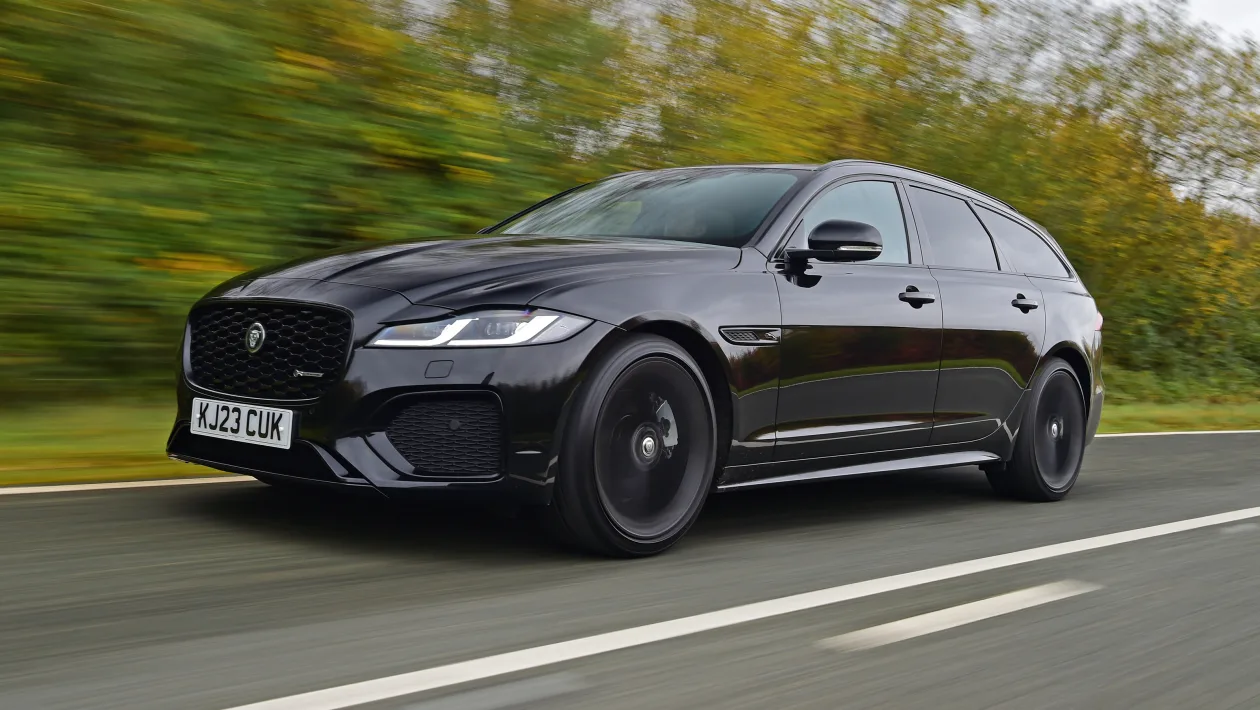When it comes to purchasing a new vehicle, one of the biggest concerns for buyers is how much value the car will retain over time. Depreciation — the rate at which a vehicle loses its resale value — varies widely depending on the make, model, market trends, and consumer demand.
While all cars lose some value the moment they’re driven off the lot, some vehicles experience steep depreciation, losing nearly 40% or more of their value within just two years. This rapid loss can catch owners off guard, especially those looking to resell or trade in their vehicle relatively soon after purchase.
Conversely, certain vehicles defy this trend, holding their value much better over the same period. These cars tend to be in high demand, backed by strong reliability records, or carry brand prestige that sustains their resale prices.
Understanding which vehicles fall into each category can help buyers make smarter decisions, whether they prioritize long-term investment or are looking for the best value retention.
In this article, we’ll explore two groups of vehicles: those that lose 40% or more of their value by year two, and those that maintain their value well beyond this threshold.
We’ll examine why some cars depreciate quickly and why others retain their worth, guiding you through the nuances of automotive depreciation.
5 Vehicles That Lose 40% Value By Year Two
Buying a new car often comes with the expectation that it will hold reasonable value over time. However, some vehicles face significant depreciation, losing close to 40% or more of their original value within just two years.
This steep drop isn’t merely a number—it impacts your financial investment, insurance rates, and potential trade-in or resale value.
There are several reasons why certain vehicles depreciate so quickly. Common factors include oversaturation in the market, lackluster reliability ratings, high maintenance costs, or shifting consumer preferences.
For example, a car that’s initially popular but later perceived as outdated, or one with frequent recalls, will see its market desirability and resale price plummet. Similarly, vehicles with lower brand prestige or poor fuel economy can fall out of favor, accelerating depreciation.
Another major factor is competition. With more vehicles offering similar features at competitive prices, some models become less desirable as consumers flock toward newer, more innovative options.
Additionally, rapid advancements in technology and safety standards can make older vehicles seem obsolete, further accelerating depreciation.
Understanding which vehicles lose value rapidly can save buyers from unpleasant financial surprises.
For those who plan to keep their cars for a short period or lease frequently, avoiding models with steep depreciation is wise. While some depreciated cars may be bargains upfront, their loss in value can outweigh the initial savings.
In the following sections, we’ll delve into five specific vehicles known to lose approximately 40% or more of their value by year two. We will explore the reasons behind their rapid depreciation, helping you make informed choices about your next vehicle purchase.
1. BMW 5 Series
The BMW 5 Series is one of the most recognized luxury midsize sedans on the market, prized for its blend of performance, technology, and upscale comfort. However, when it comes to retaining value, the 5 Series suffers a steep drop-off.
Within just two years of purchase, it can lose roughly 40% or more of its original value. This rapid depreciation is driven by a combination of factors.
First, the BMW 5 Series starts with a high initial price tag, which means the absolute dollar depreciation is more substantial than that of many mainstream vehicles.
Buyers often expect luxury cars to retain value better, but the high cost also comes with high maintenance and repair expenses, which potential used car buyers take into account.
BMW’s maintenance costs are typically above average, especially after the warranty expires, deterring some buyers in the used market.
Second, the luxury sedan market is intensely competitive. With German rivals like the Mercedes-Benz E-Class and Audi A6 offering similar features, the market becomes saturated, and the resale value suffers accordingly.
Moreover, the rising popularity of SUVs and crossovers has caused sedans, even premium ones like the 5 Series, to fall out of favor. This shift in consumer preference accelerates depreciation.
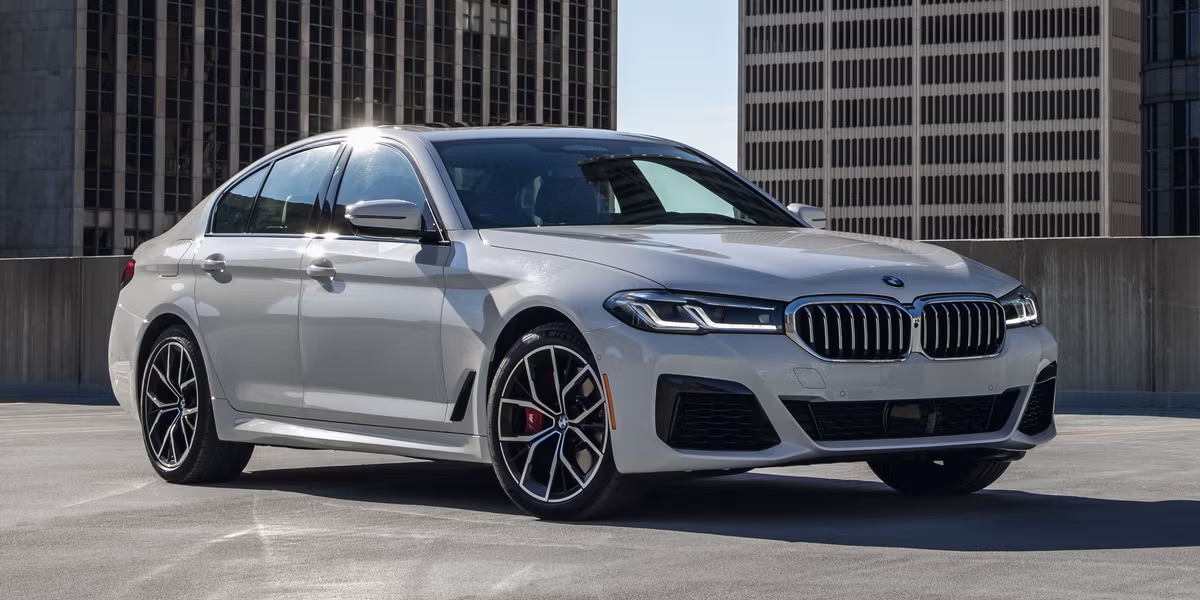
Additionally, BMW is known for frequently updating its technology and design features. While this keeps new models appealing, it also makes slightly older models feel outdated faster.
For example, the latest infotainment systems, driver assistance features, and engine options often come with new model years, reducing the desirability of the previous generation.
Lastly, warranty coverage and lease returns contribute to the depreciation. Many 5 Series vehicles return to the market as off-lease cars with high mileage relatively quickly, flooding the used market and pushing prices down.
In summary, the BMW 5 Series offers a thrilling and luxurious driving experience but pays the price in rapid depreciation. For buyers focused on resale value, this steep 40% loss by year two is an important factor to consider alongside the car’s premium qualities.
2. Mercedes-Benz E-Class
The Mercedes-Benz E-Class has long been considered a benchmark in the midsize luxury sedan segment, admired for its sophisticated design, advanced technology, and exceptional comfort.
However, despite these qualities, the E-Class experiences a sharp depreciation rate, often losing around 40% or more of its value within just two years of purchase.
A primary reason for this steep depreciation lies in the luxury car market’s competitive nature. The E-Class competes directly with vehicles like the BMW 5 Series and Audi A6, which offer similar performance, features, and prestige.
This saturation in the luxury sedan market means that used E-Class models face stiff competition, driving prices down as supply outweighs demand.
Maintenance and repair costs also weigh heavily on the E-Class’s resale value. Like many luxury vehicles, Mercedes models come with higher-than-average upkeep expenses, which dissuade some buyers in the used market.
Components such as air suspension, advanced electronics, and turbocharged engines can lead to costly repairs once the factory warranty expires. Buyers factor these potential expenses into their purchasing decisions, reducing how much they’re willing to pay for a used E-Class.
Another significant factor influencing depreciation is the growing popularity of SUVs and crossovers.
Many luxury car buyers have shifted their preferences to these larger, more practical vehicles, further reducing demand for traditional sedans like the E-Class. This shift is especially evident in the luxury segment, where SUVs now dominate sales figures.
Mercedes-Benz’s frequent model updates and technology upgrades also contribute to value loss.
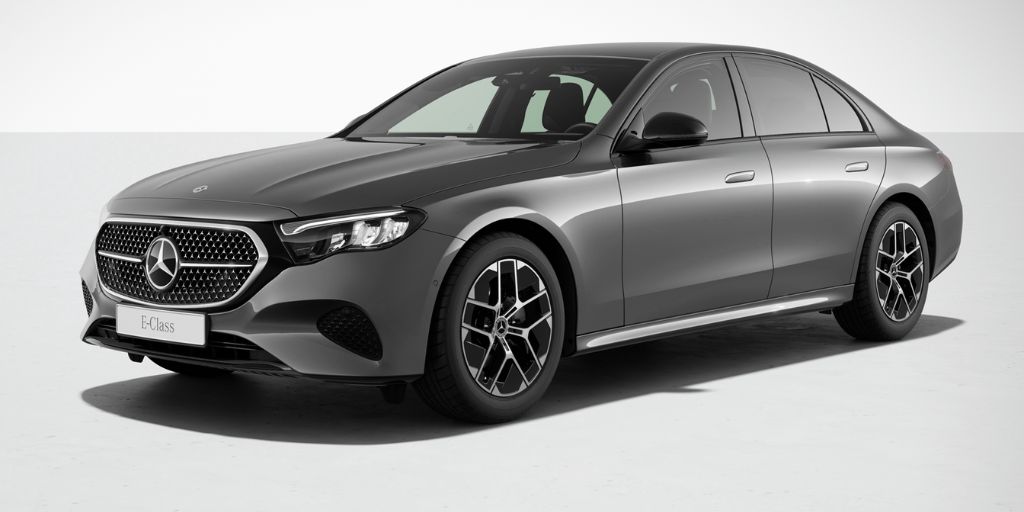
Newer models often introduce more advanced driver assistance systems, updated infotainment interfaces, and enhanced powertrains, which can make slightly older E-Class models feel outdated sooner.
Lastly, the availability of off-lease vehicles returning to the market in large numbers tends to saturate the used luxury car pool, driving prices down. Many E-Class vehicles are leased and returned within a few years, increasing supply and accelerating depreciation.
While the E-Class remains a top choice for buyers seeking elegance and comfort, it’s important to consider that this refinement comes at the cost of rapid depreciation — losing around 40% of its original value by the two-year mark.
3. Jaguar XF
The Jaguar XF is a luxury midsize sedan that stands out with its sleek British styling and sporty handling. However, despite its appeal, the XF depreciates rapidly, often losing around 40% or more of its value within just two years. Several factors contribute to this steep drop in resale value.
One of the primary reasons is Jaguar’s reputation for reliability. Historically, Jaguars have faced criticism for inconsistent build quality and higher-than-average maintenance issues compared to their German rivals.
Even though the XF offers a refined driving experience and attractive design, potential buyers often hesitate due to concerns about expensive repairs and the availability of service centers. This skepticism dampens demand in the used market and drives prices down.
Another factor is brand perception and market positioning. Jaguar, while prestigious, does not have the same widespread recognition or dealer network as German luxury marques like BMW or Mercedes-Benz. This limits the buyer pool for used Jaguars and intensifies depreciation.
Additionally, the XF competes in a highly competitive luxury segment crowded with numerous well-established competitors offering similar performance and technology.
Models like the Audi A6, BMW 5 Series, and Mercedes E-Class often overshadow the XF due to better brand loyalty and stronger resale values. This competition further accelerates the XF’s value loss.

Jaguar’s less frequent model updates and slower technology adoption compared to its German rivals make older XF models feel outdated more quickly.
Features like infotainment systems and driver assistance technologies tend to lag behind newer offerings, reducing appeal for buyers who want modern conveniences.
Lastly, the XF’s residual values are negatively impacted by Jaguar’s pricing strategy and the availability of off-lease vehicles flooding the used market.
Combined with high maintenance costs, these factors result in the XF losing nearly 40% or more of its initial value by the two-year mark.
4. Tesla Model S
The Tesla Model S has transformed the luxury electric vehicle market with its impressive performance, long-range capabilities, and cutting-edge technology.
Despite Tesla’s strong brand and loyal following, the Model S has recently been subject to unusually rapid depreciation — close to 40% within the first two years.
This steep value drop is largely influenced by Tesla’s unique pricing and innovation strategy. The company frequently adjusts the prices of its vehicles downward to stimulate demand or introduce new features at lower costs.
Unlike traditional automakers, Tesla’s aggressive price reductions make older Model S versions, which were bought at higher prices, lose significant value in the resale market.
Additionally, Tesla’s fast-paced technological advancements mean newer models come equipped with updated battery packs, improved autopilot systems, and enhanced infotainment features.
As a result, older Model S vehicles quickly appear outdated, reducing their desirability among buyers who want the latest tech.
The rapidly evolving EV market also plays a role. Increasing competition from other manufacturers like Lucid Motors, Porsche Taycan, and Mercedes EQ models puts pressure on the Model S’s resale values. Buyers have more options, often with features or styling that better suit their preferences.
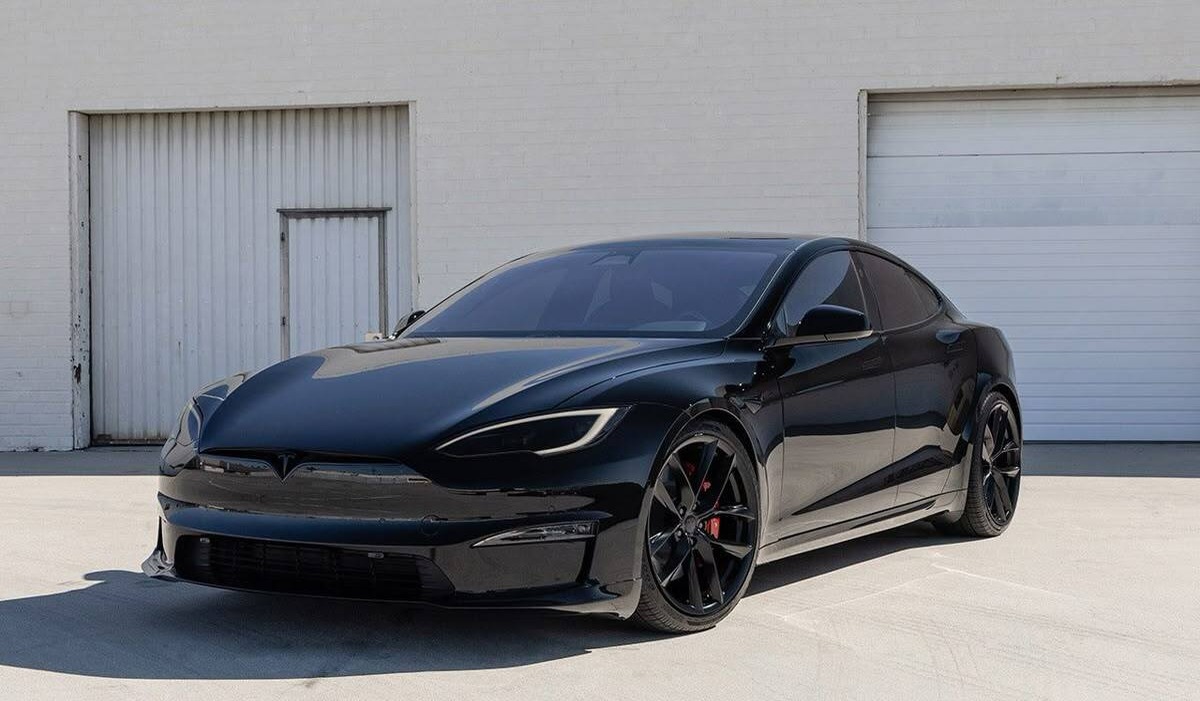
Tesla’s limited warranty and concerns about battery degradation also impact resale prices. Potential buyers are wary about the long-term condition and cost of battery replacement, which remains expensive despite Tesla’s improvements.
Moreover, the Model S’s high upfront cost means depreciation in absolute dollar terms is significant. Combined with Tesla’s off-lease vehicles returning to the market, supply increases and further depresses resale values.
In conclusion, while the Tesla Model S remains a benchmark for electric luxury sedans, buyers should be prepared for a near 40% depreciation in the first two years, driven by aggressive pricing, rapid innovation cycles, and growing market competition.
5. Chevrolet Volt
The Chevrolet Volt was a pioneering plug-in hybrid that offered buyers a practical blend of electric-only driving range and gasoline backup, making it a popular choice in its prime. However, the Volt now faces significant depreciation, losing more than 40% of its value within the first two years on average.
One major factor behind this rapid depreciation is that Chevrolet discontinued the Volt in 2019, which has dampened consumer interest and confidence in the vehicle’s long-term support and parts availability.
Buyers are less inclined to pay a premium for a vehicle with an uncertain future, pushing resale prices downward. Additionally, the Volt’s technology, while innovative at launch, is aging compared to newer electric and hybrid models.
Advances in battery technology and longer-range fully electric vehicles have made the Volt’s plug-in hybrid system feel less competitive, reducing its appeal on the used market.
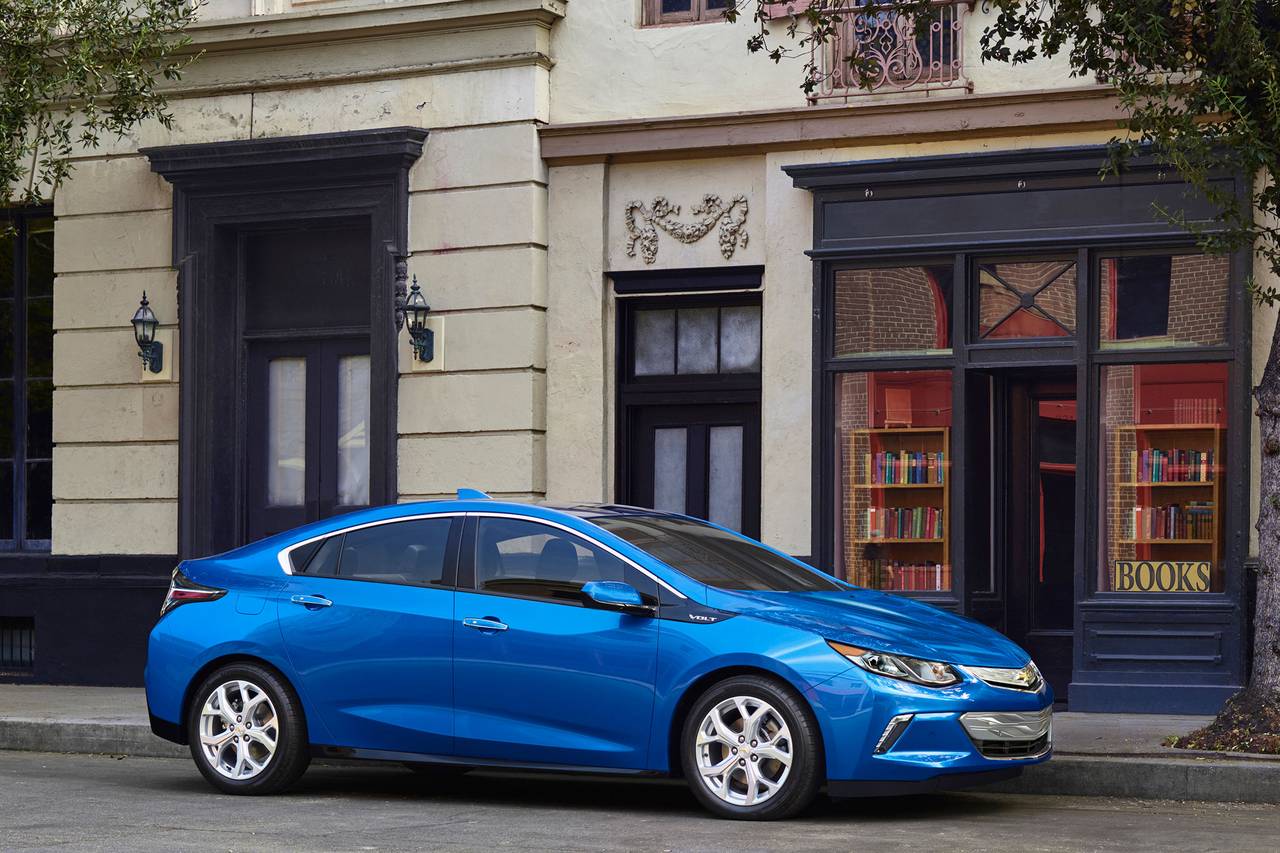
Competition from fully electric vehicles (EVs) also erodes the Volt’s value. Many consumers are moving toward pure EVs like the Tesla Model 3 or Chevrolet Bolt EV, which offer longer electric ranges and fewer mechanical complexities. This shift reduces demand for plug-in hybrids like the Volt.
Maintenance and repair concerns also affect depreciation. Although the Volt generally has lower maintenance costs than conventional vehicles, its complex hybrid system and battery can be costly to repair or replace, deterring some used car buyers.
Lastly, the Volt’s market presence was always somewhat niche, with limited dealer networks and lower production numbers compared to mainstream sedans. This smaller market size translates to less demand in the resale arena, leading to steeper depreciation.
In sum, while the Chevrolet Volt was an important early plug-in hybrid, its discontinued status, aging technology, and competition from newer EVs have caused it to lose around 40% or more of its value within two years, making it one of the faster depreciating vehicles on the market.
5 Vehicles That Don’t Lose 40% Value By Year Two
While many vehicles experience steep depreciation, losing 40% or more of their value within just two years, some cars defy this trend and maintain their value remarkably well.
Understanding which vehicles hold their worth over time is crucial for buyers who prioritize long-term financial benefits, whether for resale, trade-in, or simply minimizing overall ownership cost.
Cars that retain their value better typically have strong reputations for reliability, lower maintenance costs, and consistent consumer demand.
Additionally, brand prestige, limited supply, and unique features often contribute to better resale values. These vehicles are not only smart financial choices but also reflect buyer confidence in quality and durability.
Another key factor is market demand. Some vehicles continue to appeal due to their versatility, fuel efficiency, or specific niche appeal—such as pickup trucks, SUVs, or hybrids—that remain popular even years after their release.
Also, manufacturers that maintain steady pricing and avoid aggressive discounts tend to produce cars that hold value better.
Vehicles that don’t depreciate rapidly also tend to benefit from loyal customer bases and strong aftermarket support. For instance, models with proven long-term reliability and lower repair costs keep used car buyers interested, which helps keep prices stable.
In this section, we’ll explore five specific vehicles known for holding onto their value and depreciating much less than 40% over the first two years. We’ll analyze the reasons behind their resilience, including brand strength, design, market trends, and owner satisfaction.
This knowledge is invaluable for anyone looking to make a financially savvy vehicle purchase that won’t lose its value quickly.
1. Toyota Tacoma
The Toyota Tacoma is widely regarded as one of the best-selling midsize pickup trucks in the United States, and for good reason.
It consistently holds its value better than many other vehicles in its class, often depreciating less than 20% in the first two years. This impressive resale value stems from several core strengths.
Reliability is paramount when it comes to the Tacoma’s enduring appeal. Toyota’s reputation for building durable, low-maintenance vehicles means owners experience fewer unexpected repairs and lower overall costs.
This dependability translates directly into higher demand on the used market, as buyers seek trucks that will serve them reliably for many years.
Another factor contributing to the Tacoma’s value retention is its off-road capability and versatility.
Many trims come equipped with features like four-wheel drive, skid plates, and advanced traction control systems, making it a favorite among outdoor enthusiasts, tradespeople, and those needing a rugged daily driver.
This specialized appeal narrows the market but intensifies demand, helping maintain strong resale prices.
Toyota also benefits from a large and loyal customer base, along with a widespread dealer network that supports parts availability and service. This infrastructure reassures buyers who consider the long-term ownership costs, further enhancing the Tacoma’s desirability.
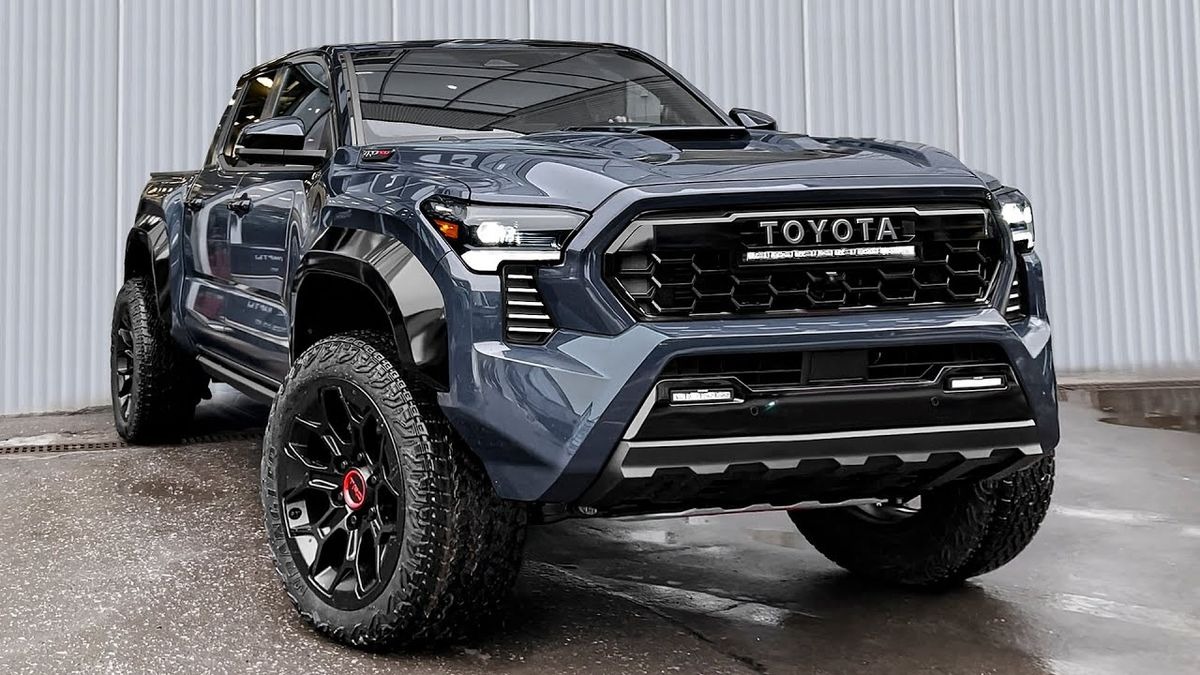
Fuel efficiency and relatively modest running costs for a pickup truck add another layer of appeal. While full-size trucks often depreciate quickly due to higher fuel consumption and maintenance costs, the Tacoma strikes a balance between capability and economy, making it more attractive to cost-conscious buyers.
Lastly, Toyota’s careful pricing strategy and gradual model updates prevent sudden drops in value. The Tacoma’s consistent quality, reputation, and demand create a stable market where depreciation remains moderate.
In conclusion, the Toyota Tacoma’s legendary reliability, off-road prowess, and strong consumer demand help it maintain value exceptionally well, making it a top choice for buyers focused on minimizing depreciation losses.
2. Honda CR-V
The Honda CR-V is a staple in the compact SUV segment and a consistent leader in resale value rankings.
Unlike many vehicles that shed close to 40% of their value in just two years, the CR-V often retains upwards of 70-80% of its original price during that period. Several reasons underpin this impressive performance.
First and foremost, the CR-V’s reputation for reliability is outstanding. Honda vehicles, particularly the CR-V, are known for their long-lasting engines, minimal maintenance requirements, and strong build quality. This makes the CR-V a favorite among used car buyers who seek a hassle-free ownership experience.
The CR-V’s spacious interior and efficient use of cabin space also boost its appeal. It offers a comfortable ride for families and daily commuters alike, with flexible cargo capacity and user-friendly technology. These features keep the vehicle in high demand on the secondhand market, reducing depreciation.
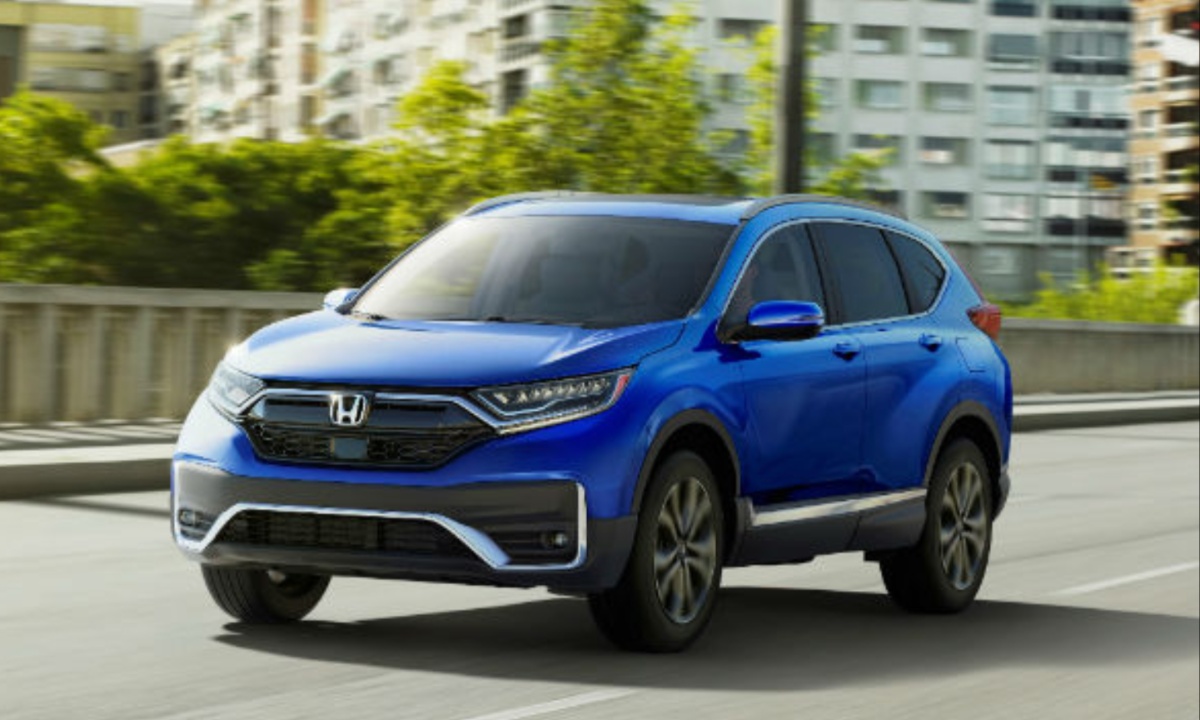
Honda’s wide dealer network and availability of affordable parts make ownership easier and cheaper over time. Potential buyers appreciate knowing that maintenance and repairs won’t break the bank, which sustains resale values.
Moreover, the CR-V benefits from a consistent design and gradual technology updates. Rather than dramatic redesigns that quickly make older models look obsolete, Honda opts for evolutionary changes that maintain appeal across model years.
Fuel efficiency also plays a significant role. The CR-V delivers competitive MPG figures, especially with its available hybrid variants, attracting eco-conscious consumers without compromising utility.
Lastly, the CR-V has a broad demographic appeal — from young professionals to retirees — ensuring strong demand across buyer groups. This diverse buyer pool helps maintain resale prices.
In summary, the Honda CR-V’s stellar reliability, practicality, and broad market appeal keep its depreciation far below the 40% mark within the first two years, making it a smart choice for value-conscious buyers.
3. Subaru Outback
The Subaru Outback has carved out a unique niche as a crossover that blends wagon practicality with SUV capability. It’s well-known for retaining its value exceptionally well, typically depreciating much less than 40% in its first two years. Several key factors explain the Outback’s robust resale value.
Foremost is Subaru’s loyal customer base, particularly among outdoor enthusiasts and those living in regions with challenging weather.
The Outback’s standard all-wheel-drive system provides excellent traction on snow, mud, and uneven terrain, which makes it highly desirable in many parts of the country.
The vehicle’s reliability and build quality also contribute significantly. While some Subaru models have experienced issues, the Outback generally enjoys a strong reputation for durability. Buyers appreciate the relatively low maintenance costs combined with its rugged design.
The Outback’s roomy interior, flexible cargo space, and comfortable ride make it a versatile choice for families and adventurers alike. This blend of utility and comfort widens its appeal and sustains demand on the used market.
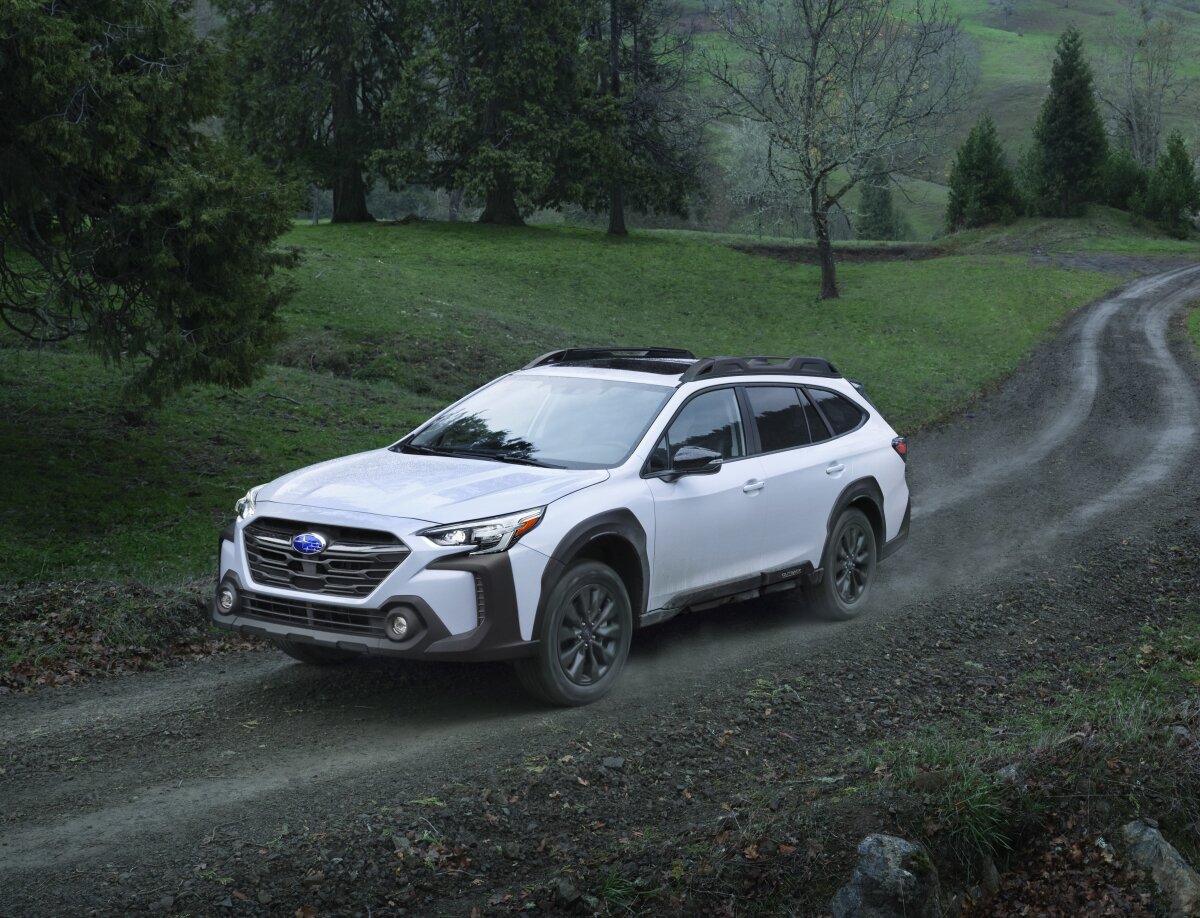
Subaru also benefits from consistent styling and gradual improvements in technology and safety features, which help keep earlier models relevant and attractive.
Fuel efficiency for a crossover with AWD is competitive, helping to balance performance with running costs. This appeals to practical buyers who need capability without sacrificing economy.
Lastly, Subaru’s limited production numbers compared to mainstream automakers help reduce market saturation, limiting depreciation pressure. The brand’s reputation for safety and environmental consciousness adds further cachet.
All these factors combine to keep the Subaru Outback’s depreciation well below the steep losses seen in many other vehicles, making it a solid choice for buyers prioritizing long-term value.
4. Porsche 911
The Porsche 911 is one of the most iconic sports cars in the world, renowned for its performance, engineering, and timeless design.
Unlike many vehicles that plummet in value shortly after purchase, the 911 often defies typical depreciation trends, frequently retaining much more than 60% of its value after two years, with some special editions even appreciating.
One of the primary reasons for this exceptional value retention is Porsche’s reputation for build quality and performance.
The 911 delivers a driving experience that enthusiasts prize, combining thrilling acceleration, precise handling, and a luxury cabin. This emotional appeal creates a passionate buyer base willing to pay premium prices for well-maintained used models.
The 911 also benefits from limited production runs and a strong collector’s market. Special editions, rare trims, and models with unique features tend to appreciate or at least hold their value better than typical mass-market vehicles. This scarcity drives demand and minimizes depreciation.

Porsche’s strong brand prestige also plays a significant role. The 911 carries a legacy of excellence that few other sports cars can match, which keeps demand robust in the resale market. Buyers recognize the car as a symbol of status and engineering prowess, encouraging stable pricing.
Furthermore, the 911’s relatively low mileage accumulation compared to daily drivers means used examples often show less wear, appealing to secondhand buyers.
Porsche’s continuous innovation without drastic redesigns ensures newer models improve without making recent ones feel outdated, maintaining broad appeal.
In summary, the Porsche 911’s legendary status, limited supply, and emotional connection with buyers keep depreciation far below the steep 40% losses common to many vehicles, marking it as a wise investment for enthusiasts.
5. Lexus GX
The Lexus GX is a midsize luxury SUV that combines rugged off-road capability with refined interior comfort. It stands out in the luxury SUV segment for its remarkable ability to retain value, typically losing significantly less than 40% of its price in the first two years.
One key reason for the GX’s strong resale value is Lexus’s reputation for exceptional reliability and build quality.
The GX shares a platform with the Toyota Land Cruiser Prado, known globally for durability and longevity. This pedigree reassures buyers who want a luxury SUV that won’t require costly repairs or maintenance.
The GX’s powerful V8 engine and full-time four-wheel-drive system make it a capable off-roader, appealing to buyers who need both luxury and ruggedness. This unique combination attracts a niche market that values versatility without sacrificing comfort or prestige.
Lexus’s commitment to customer service and warranty coverage further boosts buyer confidence. The brand’s reputation for excellent after-sales support encourages higher resale values.
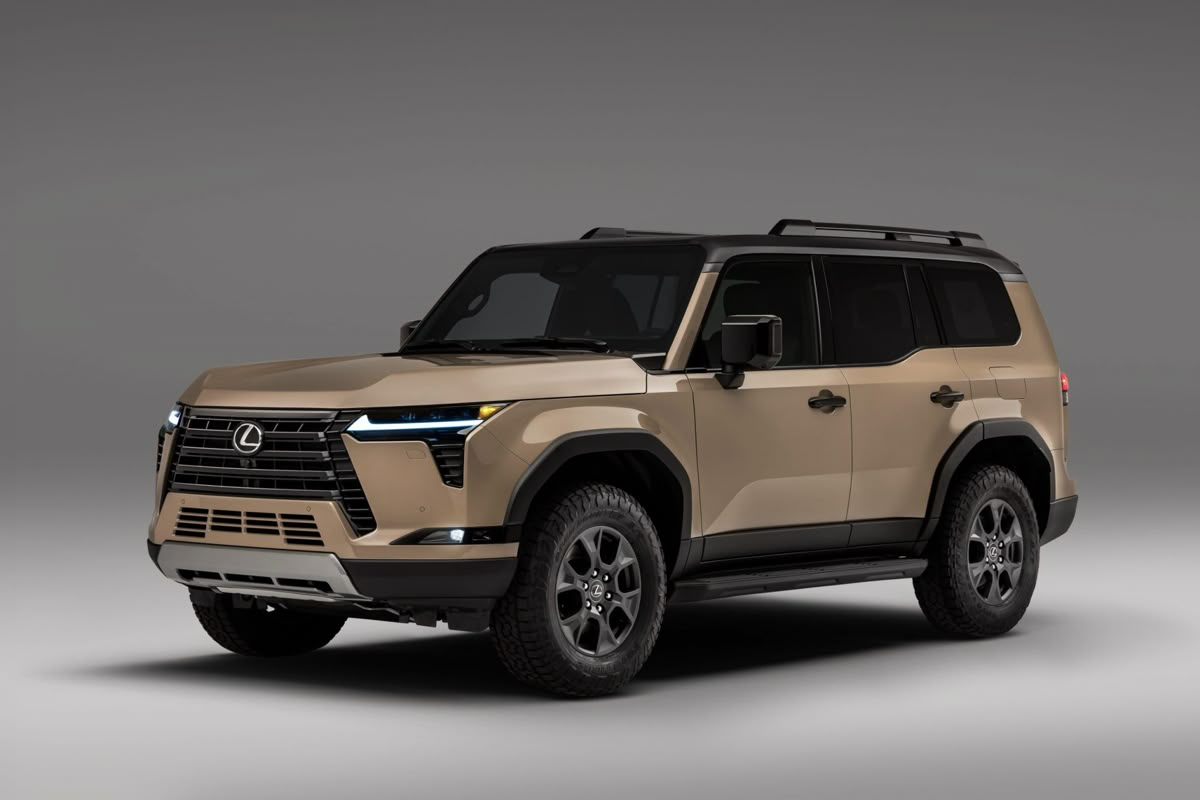
The interior of the GX is luxurious and well-appointed, with quality materials and advanced technology, giving owners a premium experience. While some competitors focus heavily on cutting-edge infotainment, Lexus prioritizes reliability and user-friendly controls, a trait appreciated by many buyers.
Market demand for the GX remains steady, especially in regions with harsh climates where off-road capability is essential. This consistent demand helps stabilize resale prices.
Finally, Lexus’s conservative design and incremental updates mean older GX models don’t become obsolete quickly, maintaining their appeal.
In essence, the Lexus GX’s blend of ruggedness, luxury, and Lexus’s stellar reliability record enable it to defy typical depreciation trends, making it a smart choice for those seeking long-term value in a luxury SUV.
Depreciation is a critical consideration when purchasing a vehicle, often impacting long-term ownership costs more than fuel or maintenance expenses.
As we’ve seen, some vehicles lose a substantial portion—40% or more—of their value within just two years, while others manage to hold their worth remarkably well. Understanding these patterns helps buyers make informed decisions that align with their financial goals and lifestyle needs.
Vehicles that lose value rapidly often do so due to oversaturation in the market, brand perception issues, or inherent design and reliability challenges.
High depreciation hits buyers hard by reducing trade-in or resale values, essentially increasing the total cost of ownership.
For instance, large sedans or SUVs with complex features or expensive maintenance needs tend to fall quickly in value as newer models or trends overshadow them. For budget-conscious consumers, avoiding these high-depreciation vehicles can mean significant savings over time.
Conversely, cars that retain their value generally combine factors like strong brand reputations, proven reliability, desirable features, and niche appeal.
The Toyota Tacoma and Honda CR-V showcase how durability and broad consumer demand can keep depreciation low. Similarly, the Subaru Outback and Lexus GX highlight versatility and premium craftsmanship as key value drivers.
Meanwhile, the Porsche 911 represents the unique case of enthusiast vehicles where limited production, prestige, and emotional appeal prevent steep losses. These vehicles illustrate that with careful selection, depreciation need not be a major financial burden.
Ultimately, buyers must balance their priorities—whether it’s upfront cost, features, or long-term value retention.
Those who prioritize resale value benefit from choosing models with strong demand and reliability, while others may accept higher depreciation for features or style. Being aware of depreciation trends empowers smarter purchasing decisions, helping buyers maximize value and satisfaction in their vehicle choices.
In summary, understanding which vehicles hold value and which don’t equips buyers to navigate the market wisely and avoid costly pitfalls, securing better financial outcomes over the lifetime of their vehicle ownership.
Also Read: 5 Cars That Throw Random Check Engine Codes And 5 That Are Code-Clean

